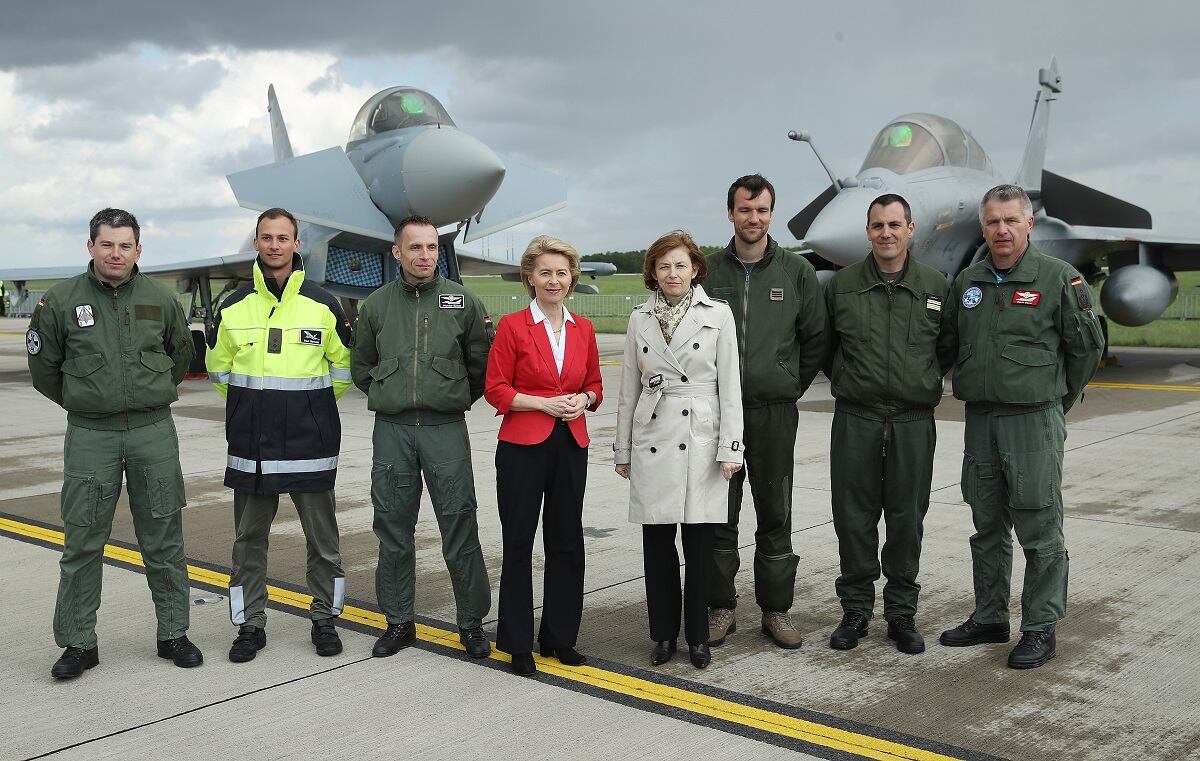LONDON — Numerous European countries are laying the groundwork for domestically prouduced, next-generation fighter jets, but the U.S. Air Force isn’t feeling left out by the emerging partnerships — in fact, its top general says the different projects could end up fueling a step change in technology.
Competition between potential aircraft designers will be pivotal to spur innovation and “to get the best solution to the complex challenges we face,” said Air Force Chief of Staff Gen. Dave Goldfein in an exclusive July 10 interview with Defense News.
“I’m not at all concerned by the fact that we might have alternative solutions being put forward by England, France, Germany, you name it,” he said. “That to me is all for the good because it produces the competitive environment that you need for innovation to occur.”
Goldfein’s comments came days before a meeting of international air chiefs and the Royal International Air Tattoo, which kicks off this Friday at Royal Air Force Fairford in England.
Read more from Royal International Air Tattoo 2018 here!
During either RIAT or the Farnborough Airshow, which starts next week, the United Kingdom is expected to lay out a road map for a fighter jet that could be fielded in the 2040s to replace the Eurofighter Typhoon.
Meanwhile, Germany and France have decided to partner on their own Future Combat Air System to replace the Typhoon and Dassault Rafale. Officials have said the program would be opened to other countries further down the line, but French and German defense firms such as Airbus, Dassault, Thales, MBDA and Safran are expected to pick up major work.
Since the reveal of the new National Defense Strategy earlier this year, U.S. Air Force leaders have been loathe to comment on its next fighter jet — alternately called Next Generation Air Dominance and also known as Penetrating Counter Air. Leadership has instead promoted a vague “family of systems” that would be developed by the service to preserve air superiority into the 2030s.
RELATED

But while the F−35 was conceived from the ground up as a multinational program, experts say it’s unlikely the U.S. Air Force’s next fighter jet would involve that level of foreign cooperation.
U.S. allies don’t necessarily need to use the same aircraft in order to be interoperable, Goldfein said. However, more work needs to be done to ensure current and future aircraft are able to share data with international partners and exploit the data incoming from foreign operators.
“When it comes to interoperability, I think we all recognize we’ve all been moving down this path of multidomain operations, and the hardest nut to crack moving forward in this vision is the C2 part, the command and control,” he said.
“That’s why you’ve seen me pushing so hard on that. And there’s recognition with every air chief I talk to that we’ve got to find ways to bust down the barriers of information sharing because anything we field has got to connect, it’s got to share, it’s got to learn, and that’s not a U.S.-only mandate. That’s an international mandate for coalition partners that will fly together.”
Valerie Insinna is Defense News' air warfare reporter. She previously worked the Navy/congressional beats for Defense Daily, which followed almost three years as a staff writer for National Defense Magazine. Prior to that, she worked as an editorial assistant for the Tokyo Shimbun’s Washington bureau.






